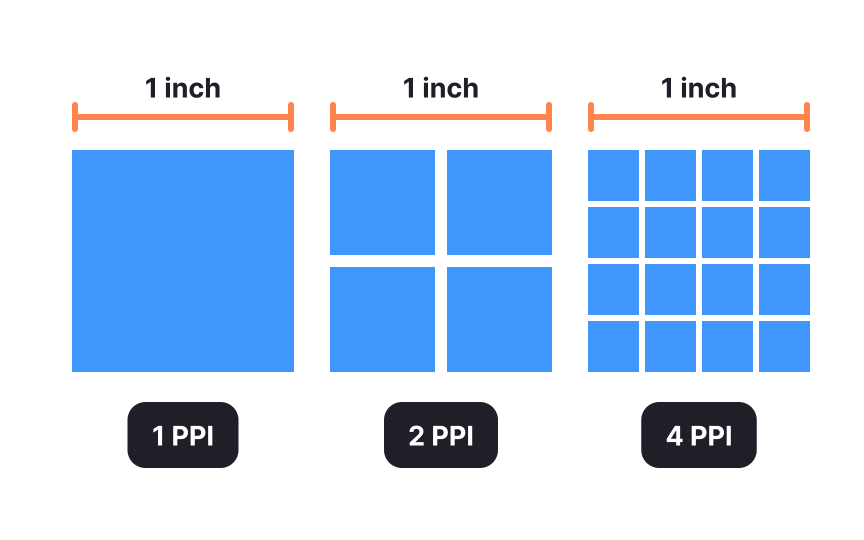PPI
PPI refers to the pixel density of an electronic image device, with the abbreviation standing for pixels-per-inch. PPI is calculated from the screen's diagonal size and resolution ratio. Higher PPI results in a clearer, crisper display. For example, a graphic with 1920×1080 Full HD resolution will be displayed well on a 20" monitor (110 PPI). However, if you decide to print it as a banner at 48" horizontally, the output will have only 46 pixels per inch, and the same image will look fuzzy.
Most modern digital displays have a PPI of 300 or higher. You can calculate the number of pixels per inch yourself using the online PPI Calculator.[1]
Understanding screen density and ratio is essential for designers to deliver enjoyable user experiences across devices.


